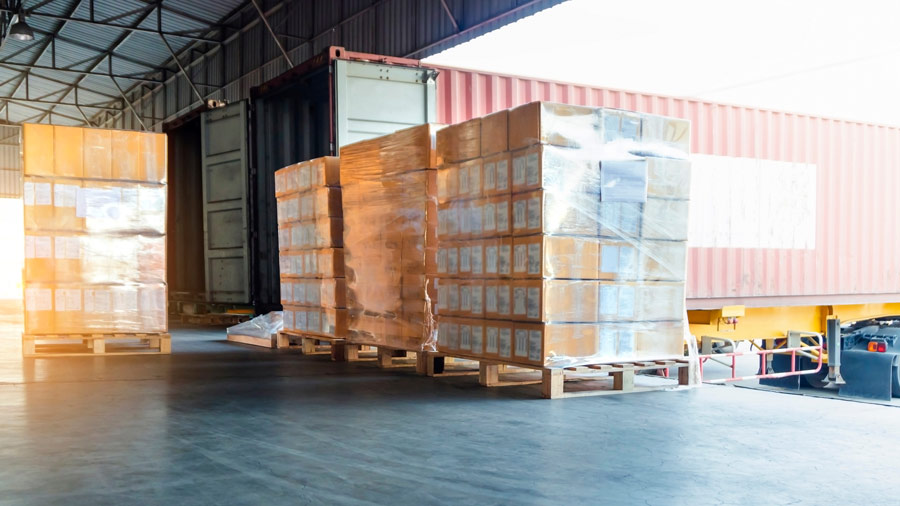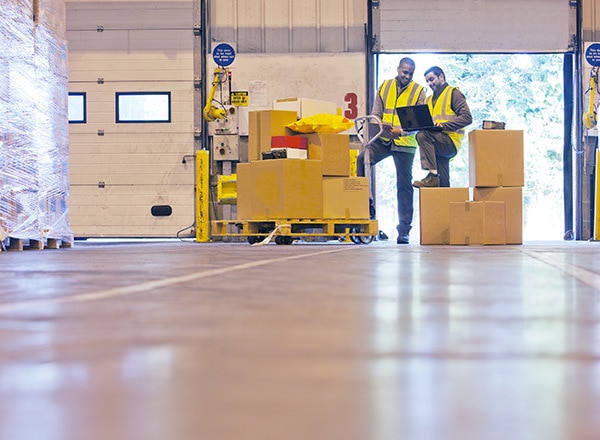Retail has undergone an accelerated change in the last few years. While e-commerce was already adopted across most industries, the global pandemic that started in March 2020 hastened the shift in market buying behavior. More purchase were happening online, with customers looking for retailers that could offer fast delivery and convenience.
Companies like Amazon and Walmart aggressively invested in logistics and rapidly expanded their fulfillment and distribution centers to meet market demand. Since then, customers have come to expect a seamless omnichannel experience with their orders arriving within two to three days.
To compete with these retail giants, businesses have begun turning to micro fulfillment centers or smaller warehouses located in urban areas closer to customers. The trend toward micro fulfillment centers enables businesses of all sizes to remain competitive and fulfill order deliveries at a faster rate.
What are micro fulfillment centers?
Micro fulfillment centers (MFCs) are small inventory storage facilities situated near large metro area where speed of delivery is important to stay competitive. Unlike traditional order fulfillment, which encompasses other aspects of production and is usually in more remote locations, an MFC focuses on improving last-mile delivery times.
The dedicated center essentially functions as a pick-and-pack, storing finished goods that are immediately shipped to customers as soon as an order is placed.
MFCs typically use software automation to optimize order processing and inventory storage given its specific role in fulfillment.
Most centers only hold enough inventory to fulfill orders for a few days, sustained by a frequent restocking cycle.
Because of this, MFCs have a compact design — typically less than 10,000 square feet — and are either a standalone (also called “dark stores”) or part of another facility, such as a garage, store basement, or existing retail space.
Businesses can also opt to run their own micro fulfillment centers, or hire a third-party logistics company that offers the service.
Micro fulfillment centers vs. traditional fulfillment
Micro fulfillment centers differ from traditional warehouse distributors in both form and function. As expected, MFCs are much smaller. One ranges from 3,000–10,000 square feet and only deals with finished goods inventory instead of the average 300,000 square feet and full-scale production scope of more traditional fulfillment warehouses.
An MFC’s compact size helps bring the last leg of logistics closer to the customer. Without the commercial trucks and other commotion typical to larger warehouses, a micro fulfillment center can easily be set up in an urban or residential area.
MFCs are primarily used as a hub to stock and deliver finished goods with high customer demand faster. The center is optimized for inventory management, often utilizing software to streamline order processing.
In many cases, businesses operating through MFCs can provide customers with same-day delivery, something unlikely to happen when all products are shipped from traditional fulfillment warehouses.
Traditional fulfillment also includes other inventory operation, such as assembly and production, which requires more manual labor and facility capabilities. These comprehensive operations are not completely focused on fulfillment, making it less agile in responding to customer orders and slower to deliver shipments.
Why are micro fulfillment centers trending up?
The move to micro fulfillment centers has become the preferred way for businesses to compete with the logistics infrastructure of larger corporations and meet their customer’s expectations for faster delivery.
Here are the primary reasons many businesses have started adopting MCFs as part of their fulfillment process.
Faster product picking
After a customer order is placed, the first step in fulfillment is warehouse order picking or the act of removing the purchased product from storage shelves. Instead of spending several minutes doing manual picking and retrieving a product, MFCs are equipped with order management software, automated storage systems, and even robotics technology.
MFC operations can pick a product SKU in seconds, lessen the amount of manual labor and error, and easily increase its fulfillment capacity.
Reduced fulfillment expenses
Even with the expanded number of fulfillment locations, a business can reduce its operating costs by delivering through MFCs instead of larg distribution centers.
MFCs require significantly less space and labor costs, as they’re mainly used to stock finished inventory and operated through automated order fulfillment.
Deliveries are also much faster and more cost-effective, with MFC inventory replenishment done in bulk at scheduled intervals. Additionally, micro fulfillment centers can improve procurement management by streamlining supplier coordination and optimizing inventory restocking. This ensures businesses maintain adequate stock levels without overordering, reducing waste and storage costs.
Faster last-mile delivery
An MFC stocks finished goods ready to ship as soon as a customer orders. With each center located in strategic real estate areas closer to customers, MFCs can send deliveries much quicker than traditional fulfillment strategies.
The click-to-customer cycle is much faster, allowing businesses to increase inventory turnover, reduce carrying costs, and see faster return on investment.
Greater competitive advantage
Providing next- or same-day delivery services can set a business apart from the competition and increase sales conversions.
Furthermore, a convenient and easily accessible location to the target market opens up multiple other shopping options. A retail store can offer curbside pickup, click and collect fulfillment, or free home delivery for online orders.
An MFC’s small size also makes it more agile and responsive to any market shifts. On-hand inventory can be easily adjusted to accommodate seasonal trends and local demand.
The challenges of using micro fulfillment centers
Even with the rising trend of micro fulfillment centers, this strategy doesn’t completely replace traditional manufacturing and won’t suit every business. Here are some considerations when planning for MFCs.
Decentralized logistics doesn’t benefit every product
MFCs work well with perishable or seasonal inventory that are in high demand, including food items or fashion apparel, where customers already expect quick delivery.
On the other hand, bulky or large products purchased less frequently, such as furniture or home gym equipment, aren’t well-suited for MFC delivery. They are difficult to store and move in a smaller warehouse space, and most customers are accustomed to longer delivery times for these types of products.
Needs data on where customer base is located
MFCs deliver the greatest benefit when they’re close to the target market. A business needs to pinpoint the best location from which to deliver to its customers. MFCs that are too far will only end up increasing costs.
If there’s a change in customer demand or segments, a business should also be able to forecast and adapt its MFCs to accommodate any market growth.
Requires automation and inventory management software
To reap the greatest benefits from MFCs, a business should have clear inventory and order management systems. Maintaining multiple warehouses doesn’t just bring faster delivery. It also creates more complex operations. Without the right systems in place, multiple fulfillment channels can be difficult to manage.
A business can have difficulty knowing when to replenish inventory, which location is best for specific products, and areas where more automation should be implemented.
Examples of micro fulfillment centers
One of the most popular applications of the micro fulfillment center business model is in the consumer goods and food space.
Notable grocery retailers, such as Kroger and Jewel-Osco, have begun launching automated multi fulfillment centers to fulfill their online orders. While Kroger is utilizing its MFC strategy to expand its grocery delivery into new territories, such as South Florida and the northeast, the latter has opened the first Jewel-Osco micro fulfillment center beside its existing store as a way to fill higher grocery order volumes.
Gopuff is a relatively new entrant in the on-demand grocery fulfillment space. Founded in Philadelphia in 2013, the company quickly became the go-to for everything from cleaning supplies to health supplements. It promises a maximum delivery time of 30 minutes, operating a network of over 500 Gopuff micro fulfillment centers that serve more than 1,000 cities across the US, UK, and France.
Thanks to its early adoption of MFCs, in addition to large investments in automated systems and logistics optimization, Gopuff has been able to stand out in a highly competitive industry.
How QuickBooks supports your order management needs
The backbone of a successful micro fulfillment center is a strong order management system. QuickBooks Enterprise enables businesses to streamline the entire fulfillment process, from order processing to final delivery tracking.
Each time an order is placed, all essential customer and inventory information is automatically updated in real-time. Businesses can then see which warehouse is the best to fulfill the order, create custom picklists across multiple locations, and manage the entire process from a single dashboard.
With QuickBooks Enterprise, your business can automatically calculate the ideal reorder point for each product, transfer inventory from one location to another, and empower employees to fulfill sales orders faster.
Final thoughts
Businesses that deliver products to the end customer can improve their overall supply chain with a micro fulfillment center strategy. When it comes to last-mile delivery, speed is the main differentiator in the market. The faster a business can fulfill a customer order, the more sales it can stand to make.
The rising trend of micro fulfillment centers allows businesses of all sizes to remain competitive, meet customer demand, and better optimize their fulfillment operations.














